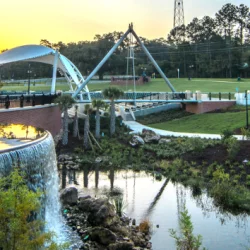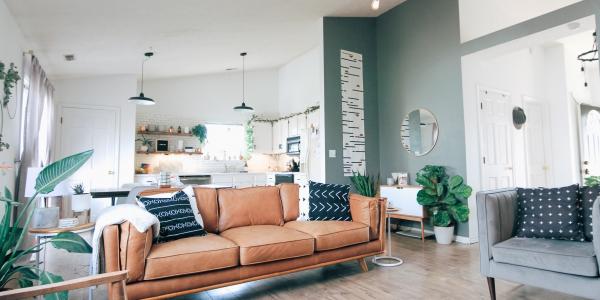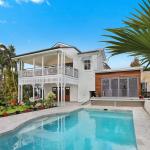The Evolution of Mixed-Use Construction: Trends Shaping Urban Development
Due to today's high real estate market interest rates, 2023 and 2024 have seen an influx of new rental buildings across the United States. Many urban planners are turning to mixed-use construction to meet this need for alternative housing solutions.
Mixed-use construction integrates residential, commercial, and sometimes industrial spaces into one multi-functional building. The result is a more cohesive, holistic environment that changes how residents live, work, and interact. Mixed-use construction can also stimulate economic growth and promote revitalization in cities.
Here’s what to know about the latest mixed-use construction trends, as well as the key benefits and challenges this venture could pose to the future of urban development.
A Quick Summary of Mixed-Use Construction
According to the Frontiers in Built Environments Journal, mixed-use construction is a building project with three or more uses. This building plan deviates from traditional zoning practices that allocate the land into separate residential, commercial, or industrial areas.
Mixed-use construction combines all these zones so that residents can live, work, dine, shop, and socialize within a much smaller neighborhood footprint. The mixed-use concept isn’t new—historically, major U.S. cities such as New York and Chicago have used it to accommodate limited space. Renewed interest is rising as renters and urban planners seek more sustainable, accessible, and economically viable communities.
How Mixed-Use Construction Benefits Urban Living
Mixed-use construction can transform urban life by creating diverse, walkable neighborhoods, a feature that 33 percent of surveyed Americans desire. Combining residential, professional, retail, and entertainment options will help a community flourish. Further, conserving infrastructure space can also lead to environmental and financial gains. Here are a few ways that mixed-use construction influences urban living.
- More Social Interactions: Mixed-use spaces encourage social interaction with retail plazas, recreational parks, and communal areas in residential buildings. This helps nurture a sense of connection and community among residents.
- Economic Vitality Boost: Residential and commercial overlap fosters a symbiotic relationship: business owners have a constant stream of local customers, while residents can enjoy products, services, and entertainment right on their doorsteps. This economic boost could also create more job opportunities in the area.
- Walkable Convenience: These convenient developments are built for pedestrians, making it easy for residents to access the local services and amenities on foot.
- Less Ecological Impact: Mixed-use construction occupies less infrastructure space than traditional urban projects. This, combined with less driving and more public transit, leads to a more sustainable urban footprint over time.
- Lower Commute Times: Integration of residential and commercial spaces minimizes the need for long commutes. Residents can walk or ride their bicycles to work, reducing traffic congestion and lowering carbon emissions.
- Elevated Urban Aesthetics: The developers who establish these communities tend to prioritize architectural design, which enhances the city’s visual appeal.
- Inclusive Community Feel: Mixed-use construction usually attracts a diverse range of occupants. This demographic fusion of various cultures, income brackets, and life stages will contribute to vibrant and inclusive neighborhoods across the U.S.
Current Trends in Mixed-Use Construction Spaces
According to research from the global real estate firm JLL, mixed-use spaces are more resilient in today’s economic climate than standalone commercial or residential structures. They also tend to have lower vacancy rates. As these developments become more ubiquitous, let’s examine four trends shaping the future of mixed-use construction:
- Transit-Oriented Development: This concept focuses on creating mixed-use spaces around transportation hubs. The objective is to encourage public transit use and curb vehicle reliance, reduce traffic, and streamline urban planning.
- Green and Sustainable Design: Mixed-use projects often utilize eco-friendly initiatives. Sustainability has become a top-of-mind concern in urban construction. Features like solar roof panels, water conservation, energy-efficient appliances, vertical gardens, and renewable power sources are frequently built into the structural design.
- Integration of Smart Technology: The Internet of Things (IoT) is another innovation in mixed-use construction. This automated innovative technology allows occupants to manage their utility consumption, enable security measures, and perform several other functions from one easily accessible, interconnected network.
- Community-Centric Ambiance: At their core, mixed-use spaces are built to reinforce strong communities. Shared amenities such as fitness centers, co-working areas, and communal gardens emphasize a shift toward urban connection over transience.
Potential Challenges of Mixed-Use Construction
As with any form of urban development, mixed-use construction has its downsides. While the economic, social, environmental, and lifestyle benefits speak for themselves, some potential challenges must also be considered.
- Regulatory Hurdles: Because mixed-use construction requires flexible zoning, these projects could face resistance from traditional regulatory frameworks.
- Noise or Congestion: Combining residential and commercial spaces will increase foot traffic and noise levels, which could impact residents' quality of life.
- Potentially High Costs: Building a mixed-use space may cost more upfront due to the complex nature of blending various functions or meeting specific codes.
- Gentrification Issues: Urban planners must be wary of displacing low-income residents as these developments attract more business and higher market values.
The Evolution of Mixed-Use Construction Is Promising
Mixed-use construction can help usher in a future of vibrant, sustainable, and inclusive cities nationwide. Developers and renters have embraced these communities for social interaction, economic growth, environmental consciousness, and urban convenience. While challenges remain, mixed-use construction’s potential to transform city living is undeniable.
More to Read:
Previous Posts:




